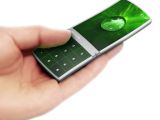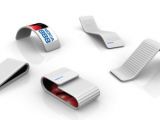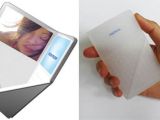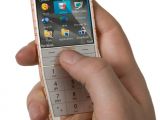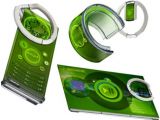Nokia, one of the most prominent handset manufacturers in the world is renown for the quality of its phones. The company was perfectly capable of adapting to the market's increased demand for technologically superior handsets.
However, unlike its rivals, Nokia 'forgot' to come up with anything new lately, which lost the company a big chunk of its ardent fans.
It may seem strange, but Nokia does not lack an R&D department. on the contrary, the company prides itself with some of the most innovative and efficient research facilities in the world.
Based on the current situation on the market, this doesn't seem so, but for someone who knows that Nokia was one of the first handset manufacturer that thought of the so-called 'touchscreen technology' 5-6 years ago, this might not come as a surprise.
One of the first mobile phones to feature a touch surface is the Nokia Aeon. I'm pretty sure no one owns one because this is just a concept phone that dates back to 2006.
If you think that the Nokia Aeon is the father of the more recent Nokia N8 or E7 smartphones, you couldn't be more wrong. Although the concept is that old, the phone looks so futuristic that even today's most advanced touch phones pale when put next to it.
The most important design feature of the Aeon was the touchscreen that stretches over the full surface area of the phone, which, obviously, was pure fantasy for that time.
Unfortunately, the concept phone never hit the market, but what's more important is the fact that Nokia wasn't able to deliver a touchscreen mobile phone before other brands did, though it had the technology long before.
Nokia 888 communicator is another very old concept phone that made it in the media almost six years ago, in October 2005. This ultra-lightweight, very thin and incredibly flexible concept phone is presumably powered by a liquid battery and, believe it or not, has a touchscreen display.
The phone looks pretty much like a bracelet and can be worn like (oversized) jewelry.
In 2005, this device was said to feature speech recognition, a touch sensitive body cover, PDA, GPS, Push email receiver and digital wallet.
Unveiled in February 2008, Nokia Scentsory concept phone was a device that was supposed to work with the senses of smell, sight, hearing and touch. In addition, Scentsory is also able to detect, transmit and emit smells.
This one was supposed to radiate colors, lighting, as well as temperature from the caller's environment. It would have featured dual-screens, LED touchpad, speakers, hidden camera and temperature sensors.
Apparently, Nokia's concept was completely based on nanotechnology. More information about this concept phone tells us that using sophisticated sensors, the odor samples of the caller's environment is transmitted to the recipient electronically.
Nokia Morph is probably one of the most recognizable concept phones unveiled by Nokia to this day.
The Morph is the result of a joint study into the future of mobile phones by Nokia and the University of Cambridge’s Nanoscience Centre.
Based on the same nanotechnology, the concept phone brings forth the idea of stretchable and flexible phone.
Nokia Morph can be carried like a bracelet, neck strap, tablet or you can make it look like a standard bar phone.
Among the "craziest" features of the Morph are the self-cleaning surfaces, the ability to sense and observe, as well as harvest energy from the local environment.
One of the recently unveiled Nokia concept phones is called Nokia E-Cu and emerged in October 2010.
Designed by Patrick Hyland, Nokia E-Cu has been designed to utilize the user's body heat to recharge the phone's battery.
According to the designer, the phone is gifted with an integrated thermo-generator that converts heat from any source into electrical energy to charge the phone. This means that whether the phone is being carried in a pocket or placed on top of a radiator, it will continue to charge the battery if it's necessary. Furthermore, the case of the phone is made of copper and features engraved heat-sinks in the shape of dried earth, which makes the phone heat-conductive.
The name of the concept phone is derived from 'environment' (for E), while Cu stands for Copper.
Even though Nokia has some of the wildest ideas about the next generation mobile technologies, for now it continues to lose ground to other 'newcomers' in the field.
Bad management or bad choices made Nokia give up most of the ideas that these concept phones introduced in the past.
Lucky for us that someone else thought about it, otherwise we would be stuck with Symbian for life.
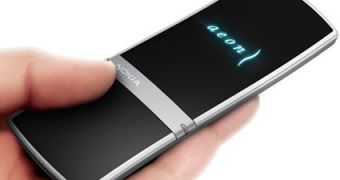
 14 DAY TRIAL //
14 DAY TRIAL // 
